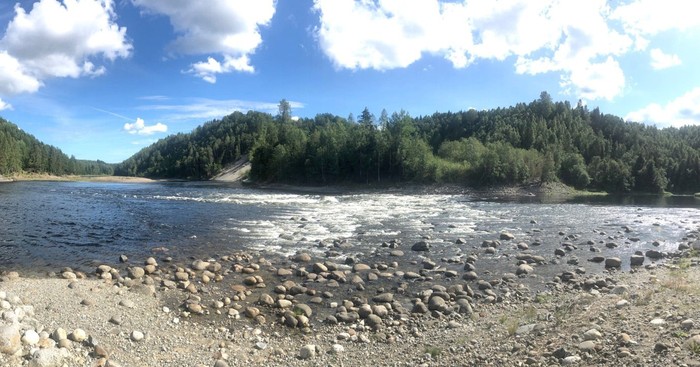In a groundbreaking geological study conducted by the University of Copenhagen, researchers have unearthed the oldest bedrock of Scandinavia, tracing its origins back to Greenland. This discovery not only sheds light on the formation of continents but also underscores the unique existence of life on Earth compared to other planets within our solar system.

In a remote region of Finland, nestled amidst some of the oldest mountains in Northern Europe, scientists stumbled upon traces of Earth's crust, previously concealed, leading back over three billion years ago and pointing northward towards Greenland.
These traces were discovered within zircon minerals, which, upon chemical analysis, revealed to researchers from the Department of Geosciences and Natural Resource Management that the 'foundation' supporting Denmark and Scandinavia may have 'birthed' from Greenland approximately 3.75 billion years ago.
"Our data indicates that the oldest portion of Earth's crust beneath Scandinavia originated from Greenland and is approximately 250 million years older than our previous estimates," stated Professor Tod Waight, a geological expert at the Department of Geosciences and Natural Resource Management.
The researchers' study of zircon revealed that, in many ways, its chemical fingerprints matched some of the oldest rocks found on this planet, discovered in the North Atlantic Craton in Western Greenland.
"The zircon crystals we found in river sands and rocks in Finland exhibit signs indicating that these crystals are much older than anything ever discovered in Scandinavia, and they also match the age of rock samples in Greenland," said Andreas Petersson, a researcher from the Department of Geosciences and Natural Resource Management, as quoted from SciTechDaily.
"At the same time, the results of analyses from three independent isotopes confirm that the bedrock of Scandinavia is likely connected to Greenland," he added.
A Water World without Oxygen
Denmark, Sweden, Norway, and Finland rest atop a portion of Earth's crust known as the Fennoscandian Shield or the Baltic Shield.
Researchers believe that these lands separated from Greenland as 'seeds' and migrated over hundreds of millions of years to their current location in Finland. Here, the plate grew as new geological material accumulated around it, eventually forming Scandinavia. At the time when the Earth's crust detached from Greenland, the planet appeared vastly different from its present state.
"The Earth might have been a water world, akin to the movie Waterworld, but devoid of oxygen in its atmosphere and lacking emerged crust. However, as this occurred far back in the past, we cannot ascertain its exact appearance," remarked Professor Waight.
According to the researchers, the fact that Earth even possesses continental crust composed of granite is quite remarkable when considering outer space and comparing it with other planets in our galaxy.
"This is unique within our solar system. And, evidence of the existence of liquid water and granite crust serves as key factors in identifying potentially habitable exoplanets and the possibility of life beyond Earth," explained Petersson.
Continents: The Key to Life
This new study adds a piece to the primordial continental puzzle, which began long before life truly flourished on Earth but largely paved the way for human and animal existence.
"Understanding how continents formed helps us comprehend why our planet is the only one in the solar system harboring life. Without continents and the continuous presence of water between them, we wouldn't be here. Indeed, continents influence ocean currents and climates, which are crucial for life on Earth," Petersson remarked.
Moreover, this new research contributes to the growing body of studies challenging the ways we've traditionally calculated how continents grew, especially during the Earth's first billion years.
"The most commonly used models assume that Earth's continental crust began forming when the planet itself formed, approximately 4.6 billion years ago. However, our research and several other recent studies suggest that chemical signatures indicating the growth of new continental crust can be identified approximately one billion years later. This means that we might need to revise many of our notions about how early continents evolved," Professor Waight explained.
Simultaneously, the findings of this research add to previous discoveries of similar 'seeds' of ancient Earth crust in other parts of the world.
"Our study provides another crucial clue about the mystery of how continents formed and spread across the Earth, particularly in the case of the Fennoscandian Shield. Yet, there is much more we don't know," clarified Professor Waight. xiaomi su7 price
"In Australia, South Africa, and India, for instance, similar seeds have been found, but we're unsure whether these seeds originated from the same birthplace or if they independently originated in several locations across the Earth. This is something we aim to investigate further using the methods employed in this study," Professor Waight concluded.




